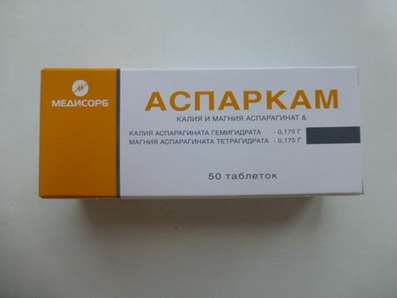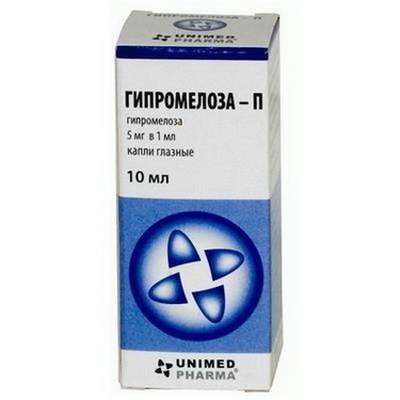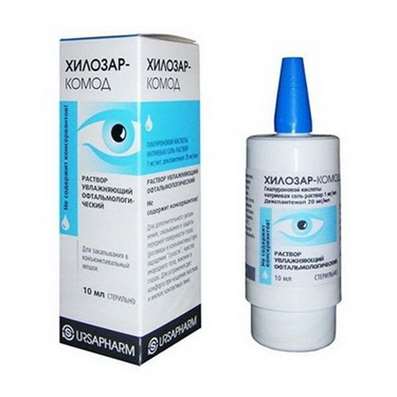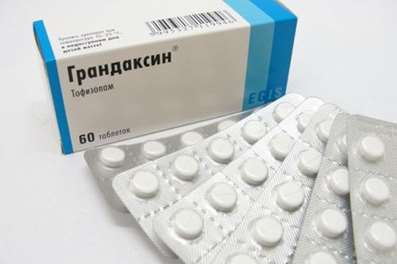Instruction for use: Citramon-Borimed
I want this, give me price
Dosage form
Pills
Composition
Active substances:
Acetylsalicylic acid - 220 mg, paracetamol - 2 00 mg, caffeine - 27.0 mg,
Excipients:
Cocoa powder 22.5 mg, citric acid monohydrate 4.6 mg, potato starch 68 mg, talc 2.4 mg, stearic acid 5.5 mg.
Description of dosage form
Plane-cylindrical tablets of light brown color with white impregnations, with a smell of cocoa, with a risk and a facet.
Pharmacological group
Analgesic combined (NSAIDs + analgesic non-narcotic remedy + psychostimulant).
pharmachologic effect
Combined drug.
Acetylsalicylic acid (ASA) has antipyretic and anti-inflammatory effect, relieves pain, especially caused by the inflammatory process, and also moderately inhibits platelet aggregation and thrombosis, improves microcirculation in the inflammatory focus.
Caffeine increases the reflex excitability of the spinal cord, excites the respiratory and vasomotor centers, dilates the blood vessels of skeletal muscles, brain, heart, kidneys, reduces platelet aggregation; reduces drowsiness, a feeling of fatigue, increases mental and physical performance. In this combination, caffeine in a small dose practically does not have a stimulating effect on the central nervous system, but it contributes to the normalization of the vascular tone of the brain and the acceleration of blood flow.
Paracetamol has an analgesic, antipyretic and weak anti-inflammatory effect, which is associated with its influence on the thermoregulatory center in the hypothalamus and a weak ability to inhibit the synthesis of prostaglandins (Pg) in peripheral tissues.
Indications
Pain syndrome of mild and moderate severity (of various origins): headache, migraine, toothache, neuralgia, myalgia, arthralgia, algodismenorea. Feverish syndrome: with acute respiratory infections (ARI), influenza.
Contraindications
Hypersensitivity to the components of the drug; erosive and ulcerative lesions of the gastrointestinal tract (in the phase of exacerbation), gastrointestinal bleeding; complete or incomplete combination of bronchial asthma, recurrent nasal polyposis and paranasal sinuses and intolerance to ASA or other non-steroidal anti-inflammatory drugs (including in history), hemophilia, hemorrhagic diathesis, hypoprothrombinemia, portal hypertension; avitaminosis K; kidney failure; pregnancy (I and III trimesters), lactation period; deficiency of glucose-6-phosphate dehydrogenase, severe arterial hypertension, severe course of ischemic heart disease, glaucoma, increased excitability, sleep disturbances; surgical interventions accompanied by bleeding, children under 18 years of age (risk of developing Reye syndrome in children under the age of 18 with hyperthermia in the presence of viral diseases).
Carefully:
Gout, liver disease, advanced age, pregnancy (II trimester).
pregnancy and lactation
The use of Citramon-Borimed during pregnancy is possible only in the second trimester of pregnancy strictly under the supervision of a doctor. This is due to the fact that ASA has a teratogenic effect in the I and III trimesters of pregnancy (when applied in the first trimester leads to the formation of the cleft of the upper palate, in the third trimester - to inhibition of labor, by reducing the synthesis of Pg, closing the arterial duct in the fetus, which causes hyperplasia of pulmonary vessels and pulmonary hypertension). Isolated with breast milk, which increases the risk of bleeding in the child due to impaired platelet function. If it is necessary to use Citramon-Borimed during lactation, it is necessary to wean the baby from the breast for the entire period of treatment.
Dosing and Administration
Apply inside, preferably between meals or immediately after meals.
Adults and children over 18 years of age are prescribed a dose of 1 tablet 2-3 times a day. The interval between doses of the drug should be at least 6-8 hours. The maximum single dose is 2 tablets, the maximum daily dose is 4 tablets.
As an antipyretic agent is prescribed at a body temperature of more than 38.5 ° C (in patients with febrile convulsions in the anamnesis - at a temperature of more than 37.5 ° C) in a dose of 1-2 tablets.
The duration of application as an analgesic should not exceed 5 days, as an antipyretic agent - no more than 3 days.
Side effects
Gastralgia, nausea, vomiting, hepatotoxicity, nephrotoxicity, erosive-ulcerative lesions of the gastrointestinal tract, allergic reactions (including Stevens-Johnson syndrome, Lyell), tachycardia, increased blood pressure, bronchospasm. Reye's syndrome in children (hyperpyrexia, metabolic acidosis, disorders of the nervous system and psyche, vomiting, liver dysfunction).
With prolonged use - dizziness, headache, visual disturbances, tinnitus, reduced platelet aggregation, hypocoagulation, hemorrhagic syndrome (epistaxis, bleeding gums, purpura, etc.), kidney damage with papillary necrosis; deafness.
Overdose
Symptoms (due to ASA and paracetamol). To poison mild severity, tinnitus, hyperventilation due to stimulation of the respiratory center, respiratory alkalosis due to loss of CO2, anxiety, anxiety, tremor, headache, nausea, vomiting, and sweating are common. Severe dyspnea is characteristic of severe poisoning, hyperthermia due to dissociation of oxidation and phosphorylation (poor prognostic sign in adults), metabolic acidosis due to increased anaerobic glycolysis, tachyarrhythmia, increased transaminase levels, bilirubin, an increase in the prothrombin index to 2.0-2, 5. For severe poisoning, collapse, coma, convulsions with pathological intensification of tendon reflexes, hypoprothrombinemia (an increase in prothrombin index more than 2.5) are characteristic, a sharp increase in transaminases, bilirubin develops.
Treatment: continuous monitoring of the acid-base state and electrolyte balance; depending on the state of metabolism - the introduction of sodium bicarbonate, sodium citrate or sodium lactate Increasing reserve alkalinity increases the excretion of ASA due to alkalinization of urine.
In the presence of liver damage, a specific antidote of paracetamol, N-acetyl-cysteine, is administered. A 20% solution of N-acetylcysteine is administered intravenously and orally: the first dose is 140 mg / kg (0.7 ml / kg), then 70 mg / kg (0.35 ml / kg). A total of 17 doses are administered. The most effective treatment is that started in the first 10 hours after the development of intoxication. If from the moment of intoxication has passed more than 36 hours treatment is ineffective.
Interaction
Acetylsalicylic acid, which is part of Citramon-Borimed, increases the toxicity of methotrexate, valproic acid, barbituric drugs, the effects of narcotic analgesics, oral antidiabetics, sulfanilmide agents (including co-trimoxazole), triiodothyronine, digoxin by displacing them from protein. Increases the risk of bleeding with concomitant use with indirect anticoagulants, platelet aggregation inhibitors, thrombolytic agents. Weaken the effects of antihypertensive agents from the group of ACE inhibitors, loop (furosemide) and potassium-sparing (spironolactone) diuretics due to inhibition of prostaglandin formation in the kidneys. Weaken the effect of uricosuric drugs due to the competitive excretion of uric acid in the tubules of the nephron. When used simultaneously with lithium salts, the concentration of lithium ions in the plasma increases.
Glucocorticosteroids increase the toxic effect of acetylsalicylic acid on the gastric mucosa, increase its excretion and reduce the concentration in the blood plasma. Combined oral contraceptives, phenytoin, alcohol, barbiturates, rifampicin, phenylbutazone, tricyclic antidepressants increase the risk of hepatotoxic effects of paracetamol in the preparation.
Macrolide antibiotics (clarithromycin, erythromycin), interferon preparations and antifungal agents (ketoconazole, fluconazole) slow the metabolism of paracetamol and increase its concentration in the plasma.
Acetylsalicylic acid and paracetamol increase the toxic effect of alcohol on the mucous membrane of the gastrointestinal tract and the liver.
Caffeine, which is part of Citramon-Borymed, when used simultaneously with β2-adrenomimetics in high doses (salmeterol, salbutamol, fenoterol) increases the risk of hypokalemia. With the simultaneous use of methylxanthines (theophylline, aminophylline) with drugs, there is an increase in the concentration of theophylline in the blood plasma and an increase in the risk of its toxic effect.
Caffeine accelerates the absorption of ergotamine.
special instructions
Children under the age of 18 can not be prescribed drugs containing ASA, since in the case of a viral infection they can increase the risk of developing Reye's syndrome. Symptoms of Reye's syndrome include prolonged vomiting, acute encephalopathy, and enlargement of the liver.
With continued use of the drug, control of peripheral blood and the functional state of the liver is necessary.
Because ASA slows blood clotting, the patient, if he is to undergo surgery, must warn the doctor in advance about taking the drug.
Patients with hypersensitivity or with bronchospastic reactions to salicylates or their derivatives Citramon-Borimed can be prescribed only with special precautions (in emergency or hospital settings). ASA in low doses reduces the excretion of uric acid. In patients with a corresponding predisposition, this can in some cases provoke a gout attack.
During treatment should be abandoned the use of ethanol (increased risk of gastrointestinal bleeding).
Form of issue
Pills. 10 tablets per contour cell pack.
1 circuit cell pack with instructions for medical use is placed in a pack of cardboard.
6 tablets in contour non-jammed packaging.
1 contour non-jawed package with instruction for medical use is placed in a pack of cardboard.
For 10 tablets in a planar cell pack or 6 tablets in a contiguous, non-jawed package, along with instructions for medical use (without a pack)
750 contour non-jammed packages or 300 contour mesh packages together with instructions for medical use, in an amount equal to the number of packages placed in transport containers not intended for consumers.
For hospitals: 750 contour non-jawed packages with 20 instructions for use are placed in a cardboard box
Storage conditions
In a dry, protected from light place at a temperature of no higher than 25 ° C.
Keep out of the reach of children.
Shelf life
4 years. The drug should be used before the date indicated on the package.
Conditions of leave from pharmacies
Without recipe.

 Cart
Cart





